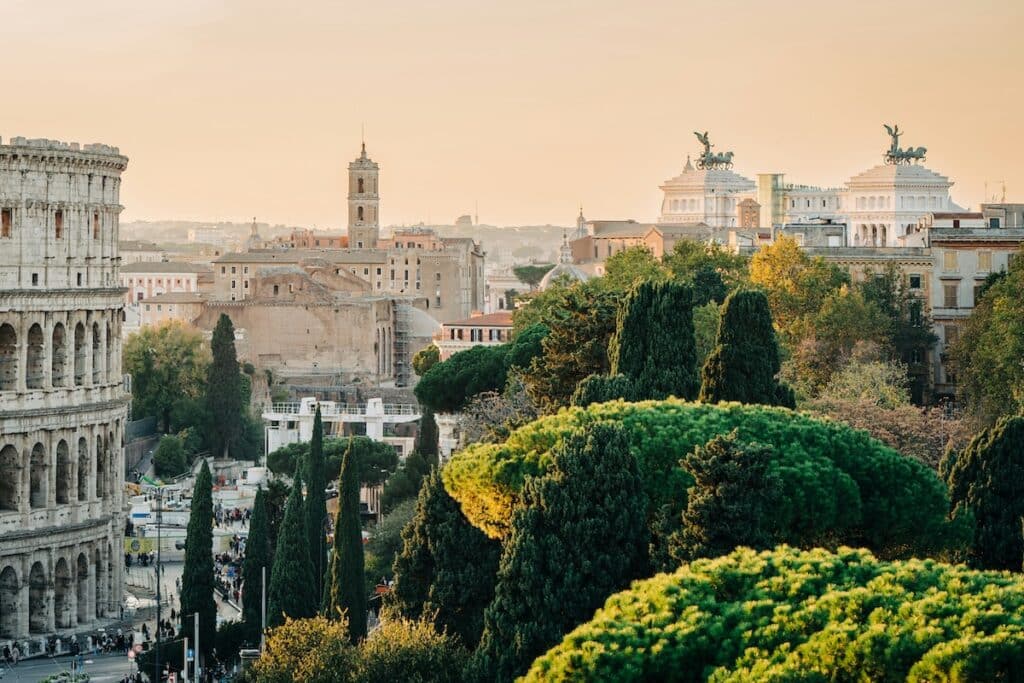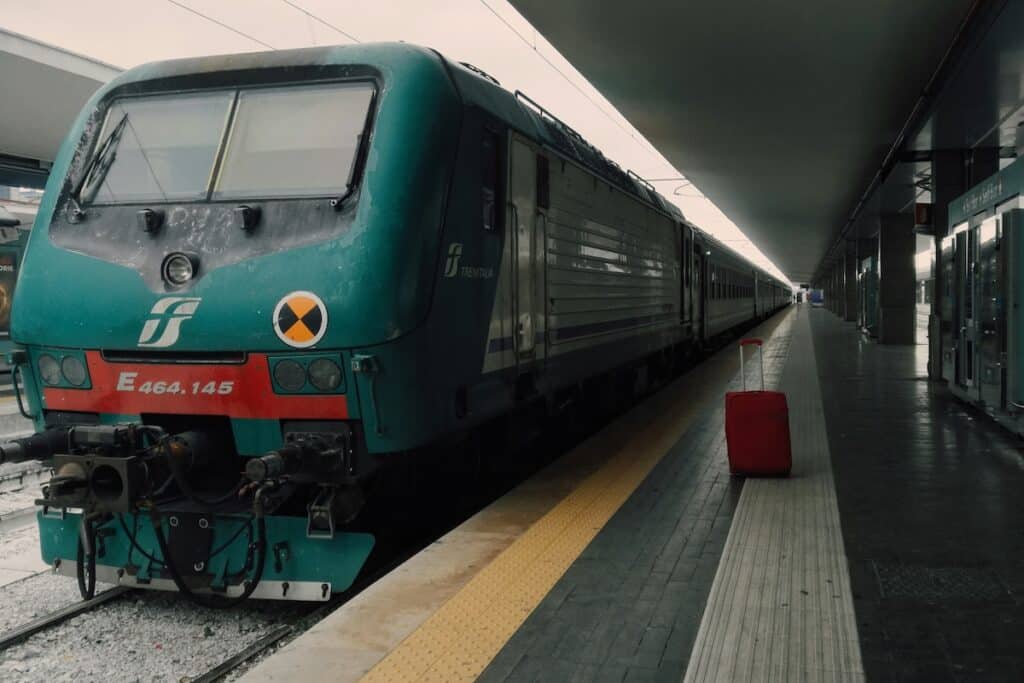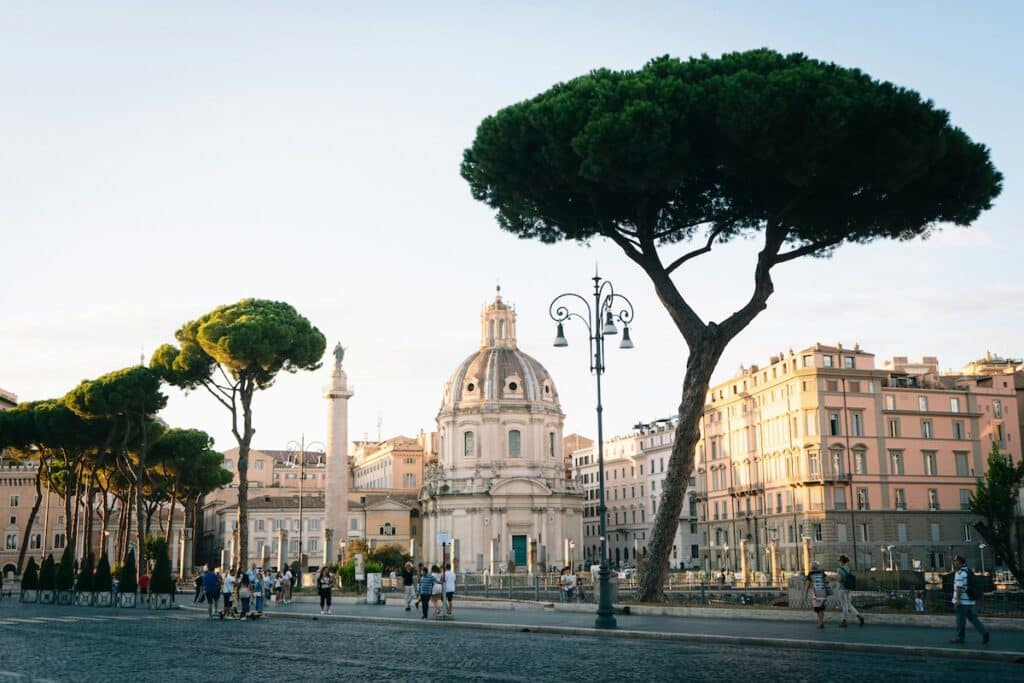
If you’re planning your first trip to Italy—or even your second—this guide will help you avoid the most common mistakes travelers make. After decades of traveling in Italy (and helping others do the same), I’ve pulled together nine easy-to-miss pitfalls that can lead to stress, wasted time, or disappointment.
Planning a trip to Italy? You want it to feel meaningful—not rushed, overwhelming, or like a checklist.
But with so much advice online, it’s easy to follow someone else’s version of the “perfect trip” and end up disappointed.
On a recent flight, I sat next to a traveler who tried to see six cities in ten days.
She came home exhausted and let down.
After 30+ years exploring Italy and helping others plan authentic trips, I want you to have a different story.
Here are 9 common mistakes I see all the time—and how to avoid them so you can build a trip that actually feels like yours.
1. Trying to Visit Too Many Places

It’s one of the most common mistakes I see. Italy is filled with beautiful places, and it’s tempting to try and see them all. Rome, Florence, Venice, the Amalfi Coast, Tuscany, Cinque Terre, Lake Como, Sicily… the list keeps growing.
But the more places you add, the less time you actually get to enjoy each one. Every time you change cities, you lose at least half a day packing, checking out, taking the train, checking in, and figuring out your surroundings.
When my seatmate told me she started off her trip with one night in Venice, one night in Florence, and two nights in Rome, I could feel her exhaustion. “I wish I’d stayed longer in one place,” she admitted.
Here’s what happens when you try to do too much:
- You spend more time on trains and buses than at the destination.
- You barely scratch the surface of each city.
- You feel rushed, not relaxed.
2. Not Understanding Regional Differences

Many travelers think of Italy as one unified culture. But Italy is more like a collection of regions, each with its own identity. The food, traditions, even the rhythm of daily life can vary depending on where you go.
The woman on the plane told me she was caught off guard by how different things felt outside the major cities. “I didn’t realize dinner started so late,” she said. “We were hungry by 7, but nothing was open yet.”
In northern regions like Milan, restaurants may open earlier, closer to 7 or 8 p.m. But in places like Naples, Sicily, or the Amalfi Coast, dinner might not even begin until 9 p.m.
She also noticed the mid-afternoon pause many towns still observe. “We went out to shop in the afternoon, but everything was closed,” she told me. “I didn’t know that was a thing.”
That midday break—called pausa—can last from about 1 p.m. to 4 p.m., especially in smaller towns. Shops close, restaurants take a break, and life slows down until evening.
Knowing these differences ahead of time helps you plan better—and avoid frustration when you’re standing in front of a closed shop or waiting for a restaurant to open.
3. Underestimating Travel Times

Maps can be deceiving. Google might say it’s a one-hour drive—but that doesn’t account for winding roads, slower speed limits, or traffic.
The woman I met told me she planned several day trips between cities. “The map said it was close,” she explained. “But it took twice as long as I expected.” She even missed a guided tour she’d booked in Siena because she underestimated how long it would take to get there.
In Italy:
- Roads in rural areas are often narrow and curvy.
- Public transport is reliable—but schedules aren’t always convenient.
- Even direct trains take longer than you’d think, once you factor in getting to and from the station.
Remember to always build in buffer time. Try not to schedule tours or activities too close to your arrival. And consider staying closer to the experiences you’re most excited for instead of planning long day trips.
4. Staying in the Wrong Location

A hotel with stunning views sounds dreamy—until you realize it’s an hour outside the city center and you don’t have a car.
My seatmate booked a villa “with a beautiful view of Florence.” But each day, she spent an hour figuring out buses, waiting for taxis, and spending money on rides just to get into the city.
When choosing where to stay, think beyond photos. Ask:
- How far is it from the places I want to visit?
- How will I get there each day?
- Is it walking distance, or will I need a car or public transport?
Staying central in major cities saves time and energy. In the countryside, you’ll likely need a car—or accommodations near a train station.
5. Renting a Car in the Wrong Place

Renting a car in Italy can be a wonderful way to explore. But it’s not always the right choice—especially in cities.
The woman I met on the plane told me she and her friend rented a car right at the airport in Florence because it “seemed easier” than figuring out trains. “I didn’t think about where we’d park,” she said. “We spent hours driving in circles, couldn’t find a spot near our hotel, and ended up paying a fortune for a garage outside the city.”
There’s also a chance that she drove through a ZTL—a restricted traffic zone common in many historic centers. It’s a common mistake made by travelers. She might receive a ticket in the mail many mothers after her trip. later,” she told me. “I had no idea those even existed.”
You don’t need a car in:
- Rome
- Florence
- Venice
- Naples
A car is helpful if you’re:
- Staying at an agriturismo or countryside villa
- Visiting hill towns not served by trains
- Exploring regions like Tuscany, Umbria, or Puglia
Choosing whether or not to rent a car depends on your itinerary. A little research ahead of time can save you a lot of hassle on the road—and keep you from accidentally driving somewhere you’re not supposed to.
6. Booking Attractions Too Late (or Not at All)

Italy’s top attractions sell out. Walking up to the Vatican Museums, Uffizi Gallery, or Roman Forum hoping for a same-day ticket? You’re likely to be disappointed—or stuck in a long, hot line.
The woman I spoke with told me she “didn’t think it would be a big deal” to buy tickets last-minute. She missed out on several must-see sights because everything was fully booked.
If there are experiences you don’t want to miss, book tickets in advance. I also recommend booking no more than one tour per day instead of cramming multiple back-to-back. Have too many things scheduled will prevent you from having the time to explore on your own.
7. Expecting Italian-American Food

Italian food is regional, seasonal, and often much simpler than the Italian-American dishes we know at home.
The woman on my flight kept searching for chicken parmesan and garlic bread. “I couldn’t find them anywhere,” she said, “and I didn’t know what half the menu meant.”
In Italy, you won’t see “spaghetti and meatballs” or “fettuccine Alfredo” in most places. You will see:
- Cacio e pepe in Rome
- Pici with ragu in Tuscany
- Arancini in Sicily
- Risotto in Milan
If you come expecting American-style Italian, you may be disappointed. But if you’re willing to try what’s local, you’ll discover flavors that belong to each place.
I always tell people—order at least one local dish in every city. It’s an easy (and fun) way to taste what makes that place special.
8. Overpacking
Overpacking sounds harmless—until you’re dragging a giant suitcase over cobblestones, hoisting it onto train luggage racks, or realizing your hotel has no elevator.
“I thought I’d need options,” the woman on the plane said. “I wore maybe half of what I packed. But carrying it all around? Never again.”
Here’s what to pack instead:
- A carry-on or medium suitcase
- Lightweight, breathable clothing
- One pair of good walking shoes
- A scarf or light layer for church visits
Packing lighter doesn’t just save your back—it saves your sanity every time you move locations.
9. Skipping Travel Insurance

“We wanted to save some money and didn’t think we’d need it,” she told me. “But my friend had to fly home three days early because of a family emergency—and she lost all the money she’d paid for those last hotel nights and tours.”
Her friend didn’t have travel insurance, so nothing was refundable. And she flew home alone, feeling stressed on top of disappointed.
Travel insurance isn’t just for medical emergencies. It can also cover:
- Trip cancellations or interruptions
- Lost or delayed luggage
- Medical care if something unexpected happens
It’s a small price for peace of mind. I always recommend it, especially for international trips like Italy.
FAQs About Planning a Trip to Italy

How many days do you need for an Italy trip?
It really depends on how much you’re hoping to see. I usually recommend at least 10–14 days if you want to visit more than one region without feeling rushed. If you’ve only got 7 days, it’s better to focus on 1–2 areas instead of trying to squeeze in the whole country.
What’s a good Italy itinerary for 7 days?
For a 7-day trip, choose 2 cities with day trips nearby. Here’s an example:
- Days 1–4: Rome (with a day trip to the Roman Forum, Vatican Museums, and maybe Tivoli)
- Days 5–7: Florence (with a day trip to Tuscany or Pisa)
If you’re short on time, I’d skip Venice or the Amalfi Coast for now—it’s better to stay longer in fewer places and save those for a future trip.
What’s a good Italy itinerary for 10 days?
With 10 days, you can visit 3 main cities at a relaxed pace:
- Days 1–4: Rome
- Days 5–7: Florence (with a day trip to Tuscany)
- Days 8–10: Venice
Use fast trains between cities to save time.
How do I plan a trip to Italy on a budget?
A few ways to save money:
- Travel in the shoulder season (April–May or September–October)
- Stay in a guesthouse, vacation rental, or agriturismo outside tourist hubs
- Use public transport instead of taxis or car rentals
- Book attraction tickets in advance
- Eat at trattorias and casual spots instead of tourist restaurants
I also highly recommend setting a daily spending limit and tracking it.
What’s the best month to visit Italy?
For comfortable weather and smaller crowds, I recommend May, September, or early October. You’ll avoid the extreme heat and packed tourist sites of summer while still enjoying great weather.
How do I plan a trip to Italy for the first time?
Start simple. You don’t have to see everything on your first trip. I always tell first-timers: focus on 2 or 3 places you’re really excited about, and give yourself time to actually enjoy them.
Think about what matters most to you—art, history, food, nature? Use that to choose where to go. I recommend staying at least 3 nights in each city so you’re not constantly packing and unpacking.
And once you’ve narrowed it down, book the big-ticket attractions (like the Vatican Museums, Uffizi Gallery, and Colosseum) ahead of time so you’re not stuck in long lines or missing out.
Where should I visit if I’ve already been to Rome and Venice?
Consider Florence, the Amalfi Coast, Tuscany, or Cinque Terre. Or explore regions like Puglia, Umbria, or Emilia-Romagna if you want something different and less crowded.
How much does a trip to Italy cost on average?
For a mid-range trip, expect to spend about $200–$300 per day per person, including hotels, food, activities, and local transport. Budget travelers can spend less, while luxury travelers can easily spend more. Flights to Italy can really vary depending on when you go and where you’re flying from. I recommend checking Google Flights to get a ballpark for your dates.
Should I book a package or plan my trip on my own?
Packages can be convenient but limit flexibility. If you want an itinerary tailored to your interests, I recommend planning a trip to Italy on your own (or working with a travel advisor). You can mix tours, day trips, and free time instead of following a rigid group schedule.
What’s the best way to travel between cities in Italy?
For most travelers, trains are the easiest and most efficient way to get between cities like Rome, Florence, Venice, and Milan. Book tickets in advance on Trenitalia or Italo for the best prices. For smaller towns, you might need buses or a rental car.




